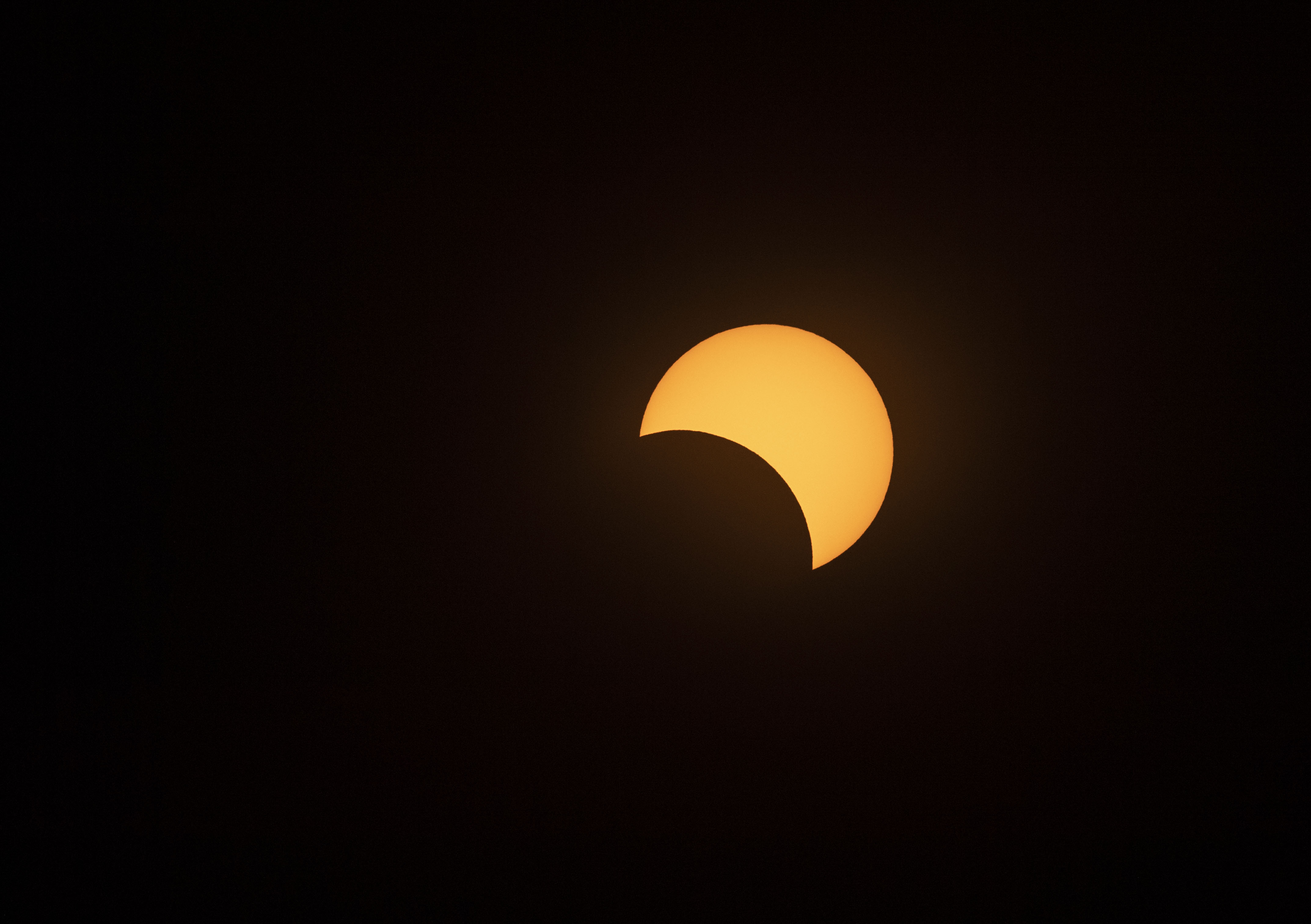The astronomical events that you cannot miss in 2022 1:03
(CNN Spanish) --
This Saturday a partial solar eclipse known as "black moon" will take place.
We tell you what it is, how you can see it and from where.
What is the solar eclipse "black moon"?
A solar eclipse occurs when the Moon is between the Sun and the Earth.
That generates a shadow that blocks the light of the Sun, partially or totally.
When it is partial, as in the case of the eclipse on April 30, "the Sun and the Moon are not perfectly aligned, so the Moon does not completely cover the Sun," explains NASA.
Check out this stunning eclipse captured by NASA's Perseverance Mars rover
And why is it called "black moon"?
It has more to do with the phase in which the Moon is than with the eclipse.
A black moon is basically the second new moon of the month, something that rarely happens.
It works similarly to a leap year.
A lunar cycle usually takes about 29 days to complete, but our months are a bit longer.
So sometimes, about every 32 months, we have two full moons or two new moons.
The second full moon in a month is called a blue moon, and the second new moon is called a black moon.
Why an eclipse can affect some of the functions of your digital devices?
Where and at what time can you see the partial solar eclipse?
The astronomical phenomenon can be seen in Antarctica, the southern tip of South America, and the Pacific and Atlantic Oceans.
According to the Space portal, specializing in space issues, "the eclipse will begin at 2:45 p.m. EDT, when it will be visible for the first time to sky watchers in areas with visibility. The time of the maximum eclipse will be at 4:41 p.m. pm EDT and the eclipse will end at 6:37 pm EDT."
advertising
"As it sets in the west on the evening of April 30, the Sun will appear partially eclipsed to those with clear skies over Chile, Argentina, most of Uruguay, western Paraguay, southwestern Bolivia, southeastern of Peru and a small area of southwestern Brazil," says NASA.
How can I safely view the eclipse?
This is very important: you can NOT look at the Sun directly.
Any glimpse of the Sun's brilliance is not only uncomfortable, it's dangerous.
Looking directly into the powerful glare of the Sun can damage the retina, the light-sensitive part of the eye.
How to admire the supermoons, eclipses, meteors and more for this 2022 1:00
Even the smallest amount of exposure can cause blurred vision or temporary blindness.
The problem is that you won't know if it's temporary.
You need eclipse glasses, which are regulated by an international safety standard.
Whether you use the cardboard eclipse glasses or a hand card with a rectangular viewfinder, the most important feature is the filter.
"Filters that meet the ISO 12312-2 standard reduce the sun's glare to a safe and comfortable level, similar to that achieved by a full moon, and block harmful ultraviolet and infrared radiation," says Rick Fienberg of the American Astronomical Society.
"Sunscreens that meet this standard are almost 100,000 times darker than ordinary sunglasses, and those glasses do not block infrared rays."
Can you really go blind if you look at a solar eclipse without special glasses?
With information from Ashley Strickland of CNN and Victoria Fernández Bellido of CNN en Español.
solar eclipse

